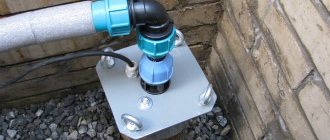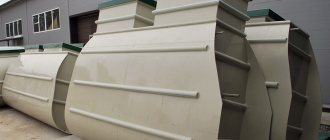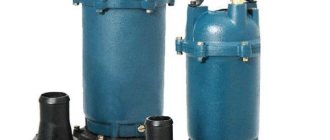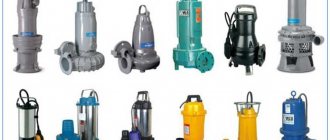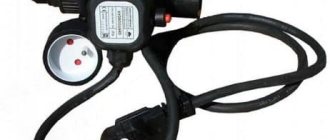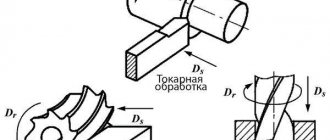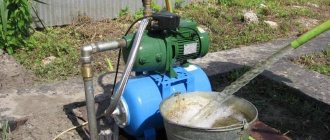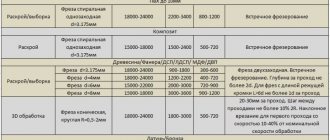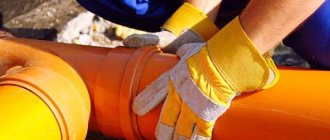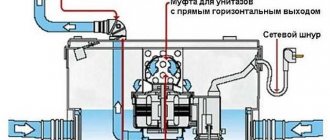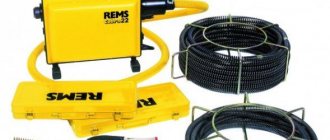The main problem with all metal coatings is rust. It not only worsens the appearance of the product, but also destroys it.
Therefore, corrosion must be removed immediately after it appears, without wasting time or waiting for it to spread. You can deal with rust using a laser.
To learn how to put this modern method into practice, as well as when and for what devices you can use a laser to remove rust, read the article.
Laser cleaner - what is this device?
To remove corrosion from metal, you need to acquire a special laser device. It is this that is the source of a luminous flux of a certain power.
The installation is based on 3 elements:
- power supply;
- laser head;
- video surveillance device.
These modules are connected to each other by fiber optic cable.
For personal needs, low-power devices are used . In auto repair shops and small enterprises, medium-power devices are used. They look like compressors. You can also find massive stationary installations on sale. They are used exclusively in large enterprises.
The essence of the procedure, pros and cons
To remove rust from metal, a special apparatus is required. It is this that is the source of laser radiation. The principle of its operation is quite simple.
If the product is not damaged by corrosion, it will reflect the rays, but when the laser is aimed at rusty metal, the damaged layer accumulates energy, heats up and moves away from the base. Some of the rust completely melts and evaporates.
The laser metal cleaning method has its advantages and disadvantages. The main advantages of the procedure:
Wide scope of application. Lasers are used both in large enterprises and in small private firms. If desired and financially possible, a battery laser can be purchased for personal use.- Safety for health and the environment. There is no release of toxic substances during the rust removal process.
- High accuracy. Only the surface at which the beam is directed is processed.
- Quick results.
- No noise.
- Ease of use of the unit.
- Possibility of processing different types of metals.
- One-time costs. Once you invest in the installation, you will not have to spend additional money on consumables. One, even the most low-power unit, is designed for 50,000 hours of operation.
- Uniform removal of rust without the risk of damaging the metal.
There are practically no disadvantages to laser cleaning of metal from rust. The main disadvantage is the high cost of the equipment. Since the demand for installations is not too high, they are not found in retail stores; they are issued to order.
How does the remover work?
The principle of operation of the laser is quite simple. The device, emitting a luminous flux, affects the metal. If the surface of the product is clean, then it simply reflects it. Areas covered with rust, on the contrary, absorb these rays.
As a result of the accumulation of excess energy, the oxides begin to peel off and move away from the base. Under the influence of powerful laser radiation, corrosion melts and evaporates .
The melting point of oxides is 1600 degrees. Steel changes its structure at higher rates. Therefore, the laser does not have a destructive effect on the metal.
High cleaning efficiency is achieved not only by exposing the metal surface to high temperatures, but also by impact loading. Using a laser, you can clean not only smooth but also corrugated products equally well.
Areas of use:
- Cleaning plastic and rubber molds
- Removing layers of rust and paint
- Degreasing of surfaces in the food industry
- Degreasing metal surfaces before welding
- Cleaning weld seams and surfaces damaged by welding
- Removal of varnish, polyamide and other coatings
- Restoration of buildings, bridges, sculptures and even paintings
- Soot removal
- Neutralization of radioactive surfaces
- Removing insulation from wires
Scope of application of the device
Lasers for removing rust and scale are used in three areas, which can be divided into the following groups:
Micromachining. It involves cleaning terminals, connectors and wires from scale.
The light beam removes a layer up to 1 micron thick. It is simply not possible to carry out the cleanup using other methods. The main area of application for laser microprocessing of metal is electronics.- Macro processing. This method involves stripping larger parts, such as jewelry, coins and other valuable items.
Although the installations are not cheap, they are completely worth the cost. It is laser macro-processing of rust that is used to clean car parts. Therefore, such devices can be found in many service workshops. - Large-scale processing . In this case we are talking about cleaning large objects, for example, parts of aircraft or missiles. Laser beams have been used in these areas for more than 40 years.
The undoubted advantage of laser rust removal is the high processing speed. In this case, the product itself is not harmed.
Scope of use
The laser has a wide range of applications, distinguishing between micro-, macro-zones and large-scale operation. The costs of carrying out the treatments will also be different, because they depend on how much the installation itself costs, its power, the volume of work and its complexity.
Microapplication
This area of use involves stripping wires when poulticing, welding various electronic connections - terminals, connectors. It is almost impossible to clean small flat wires from old insulation using any other method other than laser without damaging them. The light beam will remove a layer of insulation less than 1 micron thick or a sputtered silver coating without touching the copper component. In addition, in the field of electronics, lasers are used to perform:
- thin cuts;
- holes in wires;
- notches on the boards.
If necessary, laser systems can be used to remove the polyamide coating from brake or cooling systems, which is required when stripping the ends of the connected tubes. Laser technology will allow this complex operation to be performed without damaging the aluminum core.
Macro application
Laser metal cleaning is an expensive method, but it is fully justified when it is necessary to process expensive items: jewelry, coins, ingots, and valuable items. This technology is also used in the production of rubber products in factories: the light beam effectively removes deposits from tire molds after hundreds of pours. If you clean molds using a chemical method, the process will take a long time, and the surface of an expensive product may be damaged.
The laser prevents such consequences and minimizes the time spent on removing corrosion elements. The laser processing time of the mold does not exceed 60 minutes compared to 8 hours required by the chemical method. Also, the product will not need to be dismantled before work, which is much more convenient technically and eliminates problems during reassembly.
Large scale use
Laser rust removal is practiced in the production of components for aircraft, spacecraft, etc. Since the 90s, many military and passenger aircraft have been cleaned of paint and plaque as part of maintenance using a laser. Such installations are used to remove old lead paint from ship hulls, bridges, other large structures, railway cars, and buildings.
What devices are used?
Automated devices are used to remove rust. They perform their function almost independently. A minimum amount of effort is required from a person. Devices are distinguished by type of design, power and control features.
Types of lasers, depending on their power:
From 12 to 20 W. These are low-power units that are powered by a battery.- From 100 to 400 W. These are compact, portable systems used to remove oxides from medium-sized products.
- Up to 1000 W.
These are powerful devices that are most often stationary. The working capacity of such lasers reaches 100,000 hours. Only after this time may it be necessary to replace the head. After installing the new part, the device can be used further.
For personal needs and small businesses, portable units that are compact in size and manually controlled are most often purchased.
One of the most convenient models is a laser backpack . It is small in size and light in weight, thanks to which a person has the opportunity to quickly and without any inconvenience process large and small objects. Such devices are applicable both in production conditions and outside it.
When a higher power laser is required, it is better to purchase a stand with a built-in air filtration system.
Large factories use large-scale stationary instruments that are synchronized with a computer.
Review of the laser backpack in the video:
Known laser models
Rust removal laser
The most popular in the field of specialized equipment for removing rust from metal and other surfaces are devices from Clean Laser. They are made in Germany. A wide range of laser equipment is manufactured.
The most popular option is a backpack laser, which consists of small modules connected by a special fiber optic cable:
- Directly a backpack with a power source.
- The head of the laser device for operation.
- A device that has a video surveillance system.
When the unit is turned on, it begins scanning the surface to determine the depth of the rust layer. Only then is a full-fledged laser beam directed to the specified area.
Rust particles that are separated from the metal are transferred to a special container. The process ends after the surface is completely cleared. And the beam flow directed at it will go in the opposite direction.
Small battery-powered devices are popular in archeology and other ancient sciences. After all, they help remove contamination from any finds, even very ancient ones. Units with a power of 100 to 400 watts are similar to compressors and are used in small spaces. Large devices are used for powerful objects; their cost reaches hundreds of thousands of dollars.
An alternative to European lasers are Asian models. Usually their cost is lower, and the characteristics are similar. One of them is LY CL 100. It is used to remove rust from various metals. The power is 100 watts and can operate for 50 thousand hours without changing main parts. Other characteristics of the unit include:
- Repetitions occur at a frequency of 2 to 25 kilohertz.
- The work rate reaches 7000 millimeters per second.
- Linear movement is carried out at a speed of 70 meters per minute.
- The effective action has a length of 1064 nanometers.
- The weight of the installation is about 70 kilograms.
Such devices are well suited for cleaning rust marks from car bodies, removing paint, or cleaning individual areas that require it. Using a laser here will be the safest and most effective method for removing rust from parts and extending their service life.
Which to choose?
When buying a laser, you need to start from the problems that will be solved with its help. General recommendations:
Low power lasers are purchased for microprocessing. With their help, you can strip wires and remove oxides from terminals and microcircuits. Such devices are in demand among electronics repairers.- Medium power lasers are the most popular devices. They are bought by auto repair shop owners who clean car bodies. With their help, they not only remove rust, but also paintwork.
- Large factories and enterprises are purchasing high-power lasers.
For personal needs, you should take a closer look at inexpensive Chinese lasers. They are in demand on the market and are cheaper than their European counterparts. The average duration of operation of the device without changing the head is 50,000 hours.
Before purchasing, you need to pay attention to the weight of the unit and its dimensions.
Advantages of the method
As a means of combating rust, lasers are used everywhere, in industry, and at service stations.
Using small installations that operate on a battery, you can carry out the procedure for removing rust from a metal surface yourself.
More advantages of this method compared to converters, mechanical options, and so on will be described below:
- No harmful fumes, safe operation.
- The person does not interact with the working base.
- High quality removal.
- Silent operation of the machines.
- Fast processing of bases.
- Easy to set up and adjust the machines.
- Turn off the laser in automatic mode after the end of the procedure.
- You can work with different types of metal surfaces.
- No need to buy consumables.
- The material is not damaged, the layer is removed equally.
How to use it correctly?
Using a laser to remove rust is easy. Processing technology involves the following steps:
- the installation is put into operation;
- scan the surface to determine the depth of rust;
- direct the light beam onto the surface to be cleaned;
- hold the laser beam source in the desired position until the desired result is achieved;
- Controlling the ablation depth allows for selective removal of corrosion of varying thicknesses.
During work, you need to take care of personal protective equipment. The face is covered with a mask, and the hands are protected with rubber gloves.
The technology of such a procedure
To remove rust stains with a laser, you need specific equipment that keeps a strong beam of light in focus.
This device works based on the ability of metal to display laser radiation, but complex substances absorb it.
As a result, a layer of rust, which consists of a mixture of iron oxides and dirt, accumulates energy, heats up and falls off from the base.
If the laser device is powerful, then the rust melts and disappears.
Laser ablation
Typically, such rust removal is done through ablation - this is pulsed radiation that ensures the disappearance of the oxide film.
The film seems to peel off above the base like a cloud of plasma, then dissolves.
Ablation occurs at the boundary of two phases: in the form of gas and condensate - and begins to occur due to different temperatures (the device can heat the surface to +16500°).
Procedure for operating the equipment:
- Diagnostics. The laser calculates at what depth to work using a short pulse that comes out of the head.
- Main stage. The power is automatically determined and the rust layer is completely removed.
Desorption
This is a gentle effect on rust by a photon beam, thus resulting in a detachment of the top layer in the form of scales. Such equipment has low power; it heats without phase changes.
To obtain the desired result, if the thickness of the oxide film is up to 75 microns, the heat energy density must be from 106 W/sq. cm, and the diameter of the photon launch is no more than 100 m.
In addition to heating, you can speed up the result using the impact force of the released light.
Desorption works very carefully with metal, so it is used for: decorative finishing, corrugated surfaces, grooves, holes, parts with a complex structure.
Is it possible to make it yourself?
It is impossible to make a laser to remove rust from metal with your own hands.
Only factories specializing in this area can assemble an installation that will scan the thickness of corrosion and then safely clean it off.
You can try to assemble the device yourself if you have all the necessary components available . You will have to order and buy them in a store or have them sent from abroad. This is a rather labor-intensive process, so it is much easier to buy a ready-made installation.
Advantages of the method
Lasers are used everywhere as a rust remover, both in large industrial enterprises and in small car repair shops. With the help of small, low-power battery units, it is quite possible to clean metal from corrosion elements with your own hands in an ordinary garage. Other advantages of the laser method compared to the use of cleaners, converters and mechanical cleaning methods are:
- no harmful emissions, safety,
- lack of human contact with the surface being treated,
- highest quality and precision cleaning,
- noiselessness of even the most powerful installations,
- high surface processing speed,
- ease of setup and adjustment of the device,
- automatic shutdown of the laser emitter after the process is completed,
- ability to work with many metals and alloys,
- no need for consumables,
- no danger of damage to the material, uniformity of the removed layer.
Where to buy, what is the price?
You can buy a laser for rust removal online. Depending on the country of production, the order is placed either directly from the manufacturer or through specialized services.
The price of equipment varies widely . It depends on the power of the device, the features of its functioning, scope of application and components.
The most inexpensive lasers are made in China. The minimum cost of such a device is $1,500. Devices sold under other brands are more expensive.
You can try to save money and purchase a unit that has previously been in operation, but there is no guarantee of its proper operation. The price of used lasers starts from 60,000 rubles.
Laser cleaning equipment
You can find many modern laser cleaning devices on the market. You need to purchase a device depending on the tasks it will solve. The most popular are compact devices in the form of backpacks or small stationary installations.
Features of choice:
The backpack is a mobile device that consists of 3 components: a battery, a scanner and a laser head.
It is convenient to use in service workshops and small enterprises. It allows the master to move freely, even if he is working with large objects, both indoors and outdoors.- Stationary laser stand . Such a device will be the optimal solution when powerful laser radiation is required. In addition to the basic components, the rack is complemented by built-in air filtration systems.
- Dimensional installations . Their work is controlled by a computer. Such devices are used in large industrial enterprises.
Top 3 popular devices, their prices
The cost of laser equipment varies depending on the manufacturer and design features of the device.
Top 3 lasers for combating rusty plaque:
- Clean Laser backpack stand. Price – from 320,000 rubles for a device with a power of 100 W and a head size of 42x34x55 cm.
- Chinese laser backpack JNL.INK. The cost of the device starts from $8,000.
- CL backpack backpack with a power of 20 W and a weight of 12 kg. The price starts from 200,000 rubles.
Prices may vary depending on:
- seller,
- delivery region,
- promotions held in the store,
- exchange rates.
If it's broken, how to fix it?
Repair of laser systems should be carried out by professionals . You should not try to deal with the breakdown yourself, even if you have knowledge in the field of electronics.
Finding a specialist is not difficult. It is enough to enter the corresponding query into the search bar of any browser.
If the workshop does not have parts that need replacement, they must be ordered. In this case, you will have to wait for delivery and also pay additional shipping costs.
Laser for rust removal: types of installations and operating principle
When steel comes into contact with moisture or air for a long time, a layer of iron oxide forms on the surface. At the same time, the product loses its visual appeal, but this is not the only unpleasant consequence. In the future, the metal will begin to rust at an accelerated rate, as a result of which the item may lose its basic functions. Laser rust removal is a modern method of cleaning metal surfaces, which has become a more effective alternative to chemical methods of stopping corrosion.
Laser cleaning technology
In order to laser remove rust from metal, you need a special device that focuses a powerful light flux. The principle of operation of the device is the ability of pure metal to reflect laser radiation, when substances with a more complex composition absorb it. As a result, the rust layer, which includes a mixture of three iron oxides, hydroxide films and various contaminants, begins to accumulate energy, heat up and peel off from the base. If the power of the laser equipment is high, the plaque melts and evaporates.
Laser ablation
Most often, laser cleaning of metal from rust is carried out using ablation - pulsed radiation that causes the evaporation of the oxide film. The latter “rises” above the surface in the form of a plasma cloud, then dissolves. Ablation occurs at the boundary of two phases: gaseous and condensed - and begins due to a sharp temperature difference (the equipment is capable of heating the base to +16500 degrees).
The operating procedure of the device is as follows:
- Scanning (diagnostics). The laser determines the processing depth using a short-term pulse emitted by the working head.
- Main stage. In automatic mode, power is selected and rust is completely removed.
Desorption
Desorption refers to a conditionally softer effect on rust by a photon beam, which causes separation of the surface layer in the form of flakes. Such installations are characterized by low power, leading to heating without phase transformations. Typically, to achieve the desired effect, with an oxide film thickness of 50-75 microns, the thermal energy density should not be less than 106 W/sq. cm, the diameter of the ion-photon beam is up to 100 microns.
In addition to heating, the presence of the impact force of the emitted light beam accelerates the achievement of results. Due to its gentle effect on metals, laser desorption can be used on products with:
- decorative finishing;
- corrugation;
- various grooves, holes;
- complex details.
Laser cleaning equipment
All mechanisms for laser metal cleaning are as automated as possible, while human effort is reduced to a minimum. Laser machines vary in power, type of design, size, and some are equipped with a remote-controlled camera that is connected to a computer. To process large units, laser systems are equipped with long cables (from 50 meters).
In terms of power, devices can be as follows:
- for small areas – 12-20 W (small laser on batteries);
- for medium-sized areas – 100-400 W (portable systems of compact size);
- powerful installations - up to 1000 W (portable and stationary devices).
As a rule, such tools can work against rust or for other purposes without changing the working head within 100,000 hours. Afterwards, the part must be replaced in order to continue to operate the device. Laser systems are safe for humans; they are equipped with special protection against the beam escaping beyond the dimensions of the workpiece.
Advantages of the method
Lasers are used everywhere as a rust remover, both in large industrial enterprises and in small car repair shops. With the help of small, low-power battery units, it is quite possible to clean metal from corrosion elements with your own hands in an ordinary garage. Other advantages of the laser method compared to the use of cleaners, converters and mechanical cleaning methods are:
- absence of harmful emissions, safety;
- lack of human contact with the surface being treated;
- highest quality and precision cleaning;
- noiselessness of even the most powerful installations;
- high speed of surface processing;
- ease of setup and adjustment of the device;
- automatic shutdown of the laser emitter after the process is completed;
- ability to work with many metals and alloys;
- no need for consumables;
- no danger of damage to the material, uniformity of the removed layer.
Scope of use
The laser has a wide range of applications, distinguishing between micro-, macro-zones and large-scale operation. The costs of carrying out the treatments will also be different, because they depend on how much the installation itself costs, its power, the volume of work and its complexity.
Microapplication
This area of use involves stripping wires when poulticing, welding various electronic connections - terminals, connectors. It is almost impossible to clean small flat wires from old insulation using any other method other than laser without damaging them. The light beam will remove a layer of insulation less than 1 micron thick or a sputtered silver coating without touching the copper component. In addition, in the field of electronics, lasers are used to perform:
- thin cuts;
- holes in wires;
- notches on the boards.
If necessary, laser systems can be used to remove the polyamide coating from brake or cooling systems, which is required when stripping the ends of the connected tubes. Laser technology will allow this complex operation to be performed without damaging the aluminum core.
Macro application
Laser metal cleaning is an expensive method, but it is fully justified when it is necessary to process expensive items: jewelry, coins, ingots, and valuable items. This technology is also used in the production of rubber products in factories: the light beam effectively removes deposits from tire molds after hundreds of pours. If you clean molds using a chemical method, the process will take a long time, and the surface of an expensive product may be damaged.
The laser prevents such consequences and minimizes the time spent on removing corrosion elements. The laser processing time of the mold does not exceed 60 minutes compared to 8 hours required by the chemical method. Also, the product will not need to be dismantled before work, which is much more convenient technically and eliminates problems during reassembly.
Large scale use
Laser rust removal is practiced in the production of components for aircraft, spacecraft, etc. Since the 90s, many military and passenger aircraft have been cleaned of paint and plaque as part of maintenance using a laser. Such installations are used to remove old lead paint from ship hulls, bridges, other large structures, railway cars, and buildings.
What laser models are available?
The most popular on the market are devices from Clean Laser (Germany), which produces a large line of laser equipment. The most popular is the compact “backpack” laser, consisting of 3 separate modules connected by a fiber optic cable:
- backpack with power source;
- laser head;
- video surveillance device.
When the unit is turned on, the surface is scanned, the depth of the rust is determined, and only then a laser beam of full power is directed to the area of contamination. The remains of destroyed rust elements that have become detached from the metal are taken into a special container. The process ends automatically when the surface of the product becomes completely free and the light stream directed at it is reflected.
Small, low-power battery devices are very popular among archaeologists and antique lovers, as they can remove stains even from delicate, valuable items. Medium-sized units with a power of up to 400 W look like compressors and are usually used in auto repair shops and small industries. Large, powerful installations are large-scale and cost hundreds of thousands of dollars.
Chinese lasers
Products made in China are also in demand on the market, because their price is usually cheaper than that of European installations. For example, the LY CL 100 device is used to clean rust from metal products, has a power of 100 W, and is operated without changing the head for 50,000 hours. Here are other characteristics of the device:
- repetition frequency – 1.2-25 KHz;
- operating speed – 7000 mm/sec;
- linear speed – 70 m/min;
- wavelength – 1064 Nm;
- installation weight – 70 kg.
Such mobile devices can be used to clean a car body, remove paint, or strip rusty areas. The use of a laser is considered an effective and safe way to update parts, helps extend their life and seriously saves on the purchase of new ones.
"Laser remover" will destroy rust in seconds
Any of us knows what rust is. It is quite difficult to fight it, and if rust has already covered a metal product, you need to spend a lot of time and effort to eliminate the rust layer. You will have to use both mechanical means (for example, a stiff wire brush) and some chemicals. But we live in a new century, where we often find technologies and devices that were considered science fiction just a few years ago. Flights to other planets, attempts to create a nuclear engine for rockets, lasers - all these are the realities of today. As for lasers, it is proposed to use them to eliminate rust. We are talking about a “manual remover”, the operation of which was shown on video.
The video is unusual; some YouTube users believe it is fake. But there seems to be a real company that developed this product. This is a German company CleanLaser. It offers laser systems in a variety of form factors, including portable lasers as well as mobile workstations. The website states that “Powerful, very short and fast pulses of the laser beam produce micro-flashes of plasma that promote sublimation and release of the target substance.” In general, it seems to be true.
The power of the installations on the site varies - from 12 W to 1 kW, which is quite a lot. At the same time, almost nothing is said about the safety of installations. True, the operators work only in safety glasses, as can be seen in the photo from the site.
The device shown in the video is called the World's First Laser Rust Remover.
Only registered users can participate in the survey. Come in, please.
Tags:
